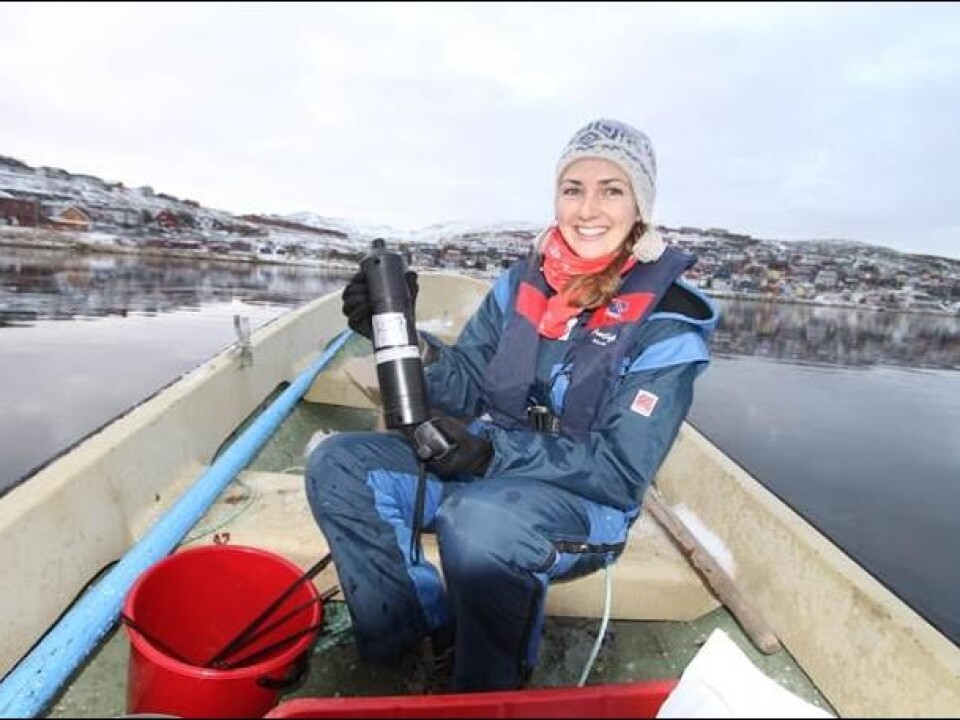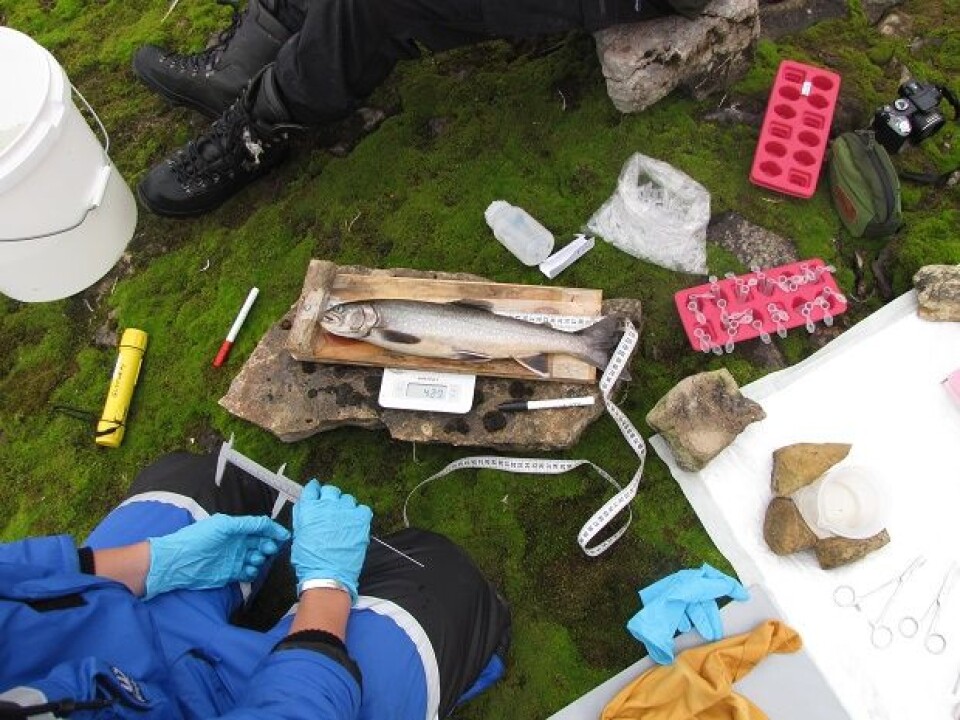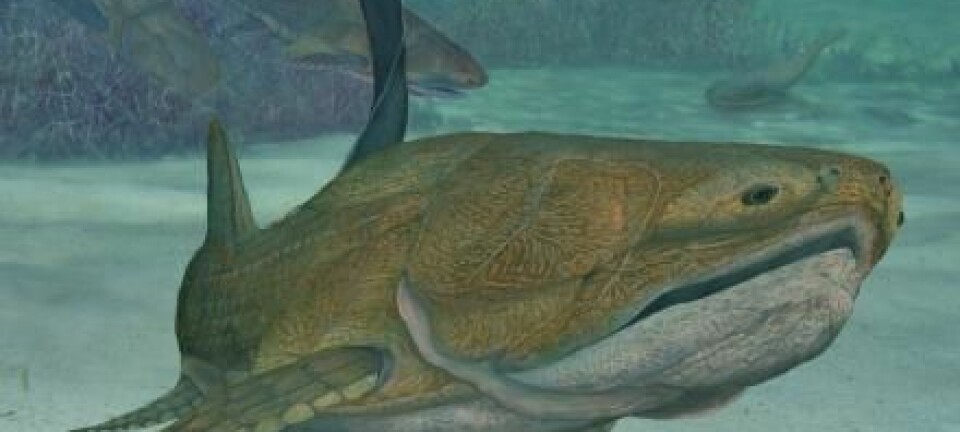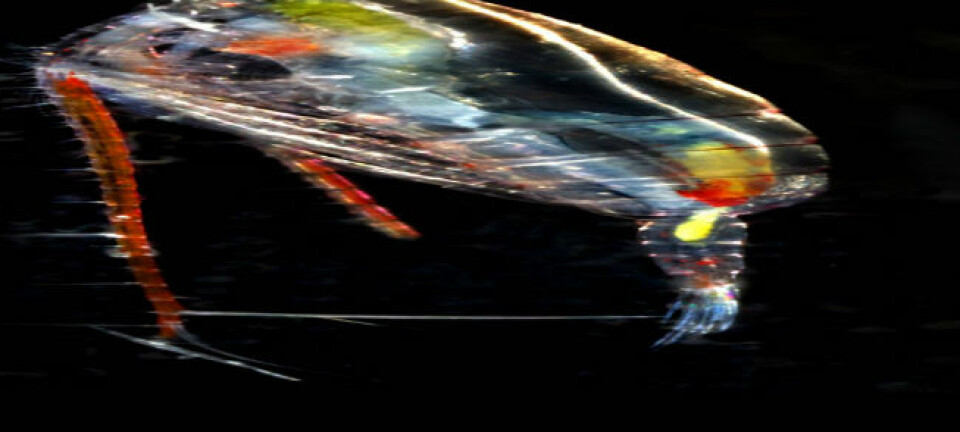An article from NIVA - Norwegian Institute for Water Research

Evolution in real time on Bear Island
Researchers tracked the northern-most freshwater fish over an entire year with surprising results.
In the midst of polar bear country, in fact Bear Island (Bjørnøya) on Svalbard, we find Lake Ellasjøen. This lake has been the subject of several scientific studies, mainly research on environmental toxins, but a new study has made a discovery that links back to Charles Darwin and the Galapagos Islands. Arctic charr, the only fish species present in Ellasjøen, are in the process of developing different attributes - characteristics so different that it could result in the formation of new species.
Natural selection
In the 1830’s Charles Darwin collected finches from the Galapagos Islands and observed that the beaks of the finches were formed differently, depending on what type of habitat they inhabit.
More recently, genetic analysis has revealed that the islands were populated by a single flock of finches that arrived at the Galapagos about 3 million years ago. These birds, when presented with this unfamiliar environment composed of many different habitats, adapted to best exploit the different food items available.. This natural selection, incorporated in Darwin’s theory of evolution, resulted in the single original species eventually dividing into 14 different species. This phenomenon, commonly called adaptive radiation, means that the original (homogeneous) species eventually divides into subspecies that can be very different in physical appearance - so-called phenotypic differences - because they have been selected for and adapted to different habitats or specific niches. Eventually, this may lead to the development of new species.
Darwin’s finches of the aquatic world?
Four researchers from the Norwegian Institute for Water Research (NIVA), Norwegian Institute for Nature Research (NINA), Durham University and Akvaplan-NIVA are, after their recent findings from Lake Ellasjøen, tempted to describe Arctic charr as the Darwin’s finches of the aquatic world. Different individuals of arctic charr are - despite being the same species - in the process of developing various attributes that allow them to better utilise different local ecological niches and resources in the lake. This occurs even though Arctic charr are the only fish species in Ellasjøen.

“The study enabled us to investigate 'evolution in real time' and how a species may divide into multiple phenotypes,” says Kate Hawley, first author of the article and Research Assistant at the Norwegian Institute for Water Research (NIVA).
Telemetry in the kingdom of the polar bear!
Using cutting-edge acoustic telemetry technology the researchers followed 24 individuals of the northern-most freshwater fish within the lake, even under ice. The study lasted for one year and the multi-receiver system deployed registered a total of 191,229 different positions, enabling the researchers to track the fish movements in 3-dimensions during the year. The article is published in the scientific journal Scientific Reports.
“As far as I know we are the first to conduct such a survey throughout an entire year and in such an inhospitable environment, under the ice and during an Arctic winter,” says Carolyn Rosten, a researcher at NINA.
Robust versus delicate
The researchers discovered that the charr have split into two phenotypes - a large "robust" charr that feeds on benthic zooplankton, and a smaller more “delicate” form, which predominately feeds on plankton. To the researchers' surprise the habitat of the two forms largely overlapped. In other words they coexisted, except for two brief periods: in June, when the ice broke, and during the spawning season in autumn.

“Exploitation of the same habitat, but key differences at important times of the year, suggests that competition between a single species works to preserve the different phenotypes we observed - whilst simultaneously creating the potential for so-called sympatric speciation, i.e. the potential for a new species to form without geographic isolation,” says Hawley.
The study, which forms part of a larger research focus on Arctic charr and their adaptations to the harsh environment of the North, also contributes to increased understanding of how new species may arise.
------------------------------------------------------
Read the Norwegian version of this article at forskning.no
Scientific links



































